James C. Fletcher served as NASA’s fourth and seventh administrator. President Richard M. Nixon nominated Fletcher for his first term, from 1971 to 1977, during which he oversaw the development of the space shuttle. Shortly after the 1986 space shuttle Challenger accident, President Ronald W. Reagan nominated Fletcher to NASA’s lead position to help steer the agency’s recovery from the tragedy. During his second term, Fletcher oversaw the space shuttle return to flight effort, including hardware redesigns and reorganization of the agency’s management structure and safety culture. Fletcher also took steps to move forward on the space station program, named Freedom in 1988, by signing agreements with NASA’s international partners in September 1988. He resigned from the agency in April 1989.
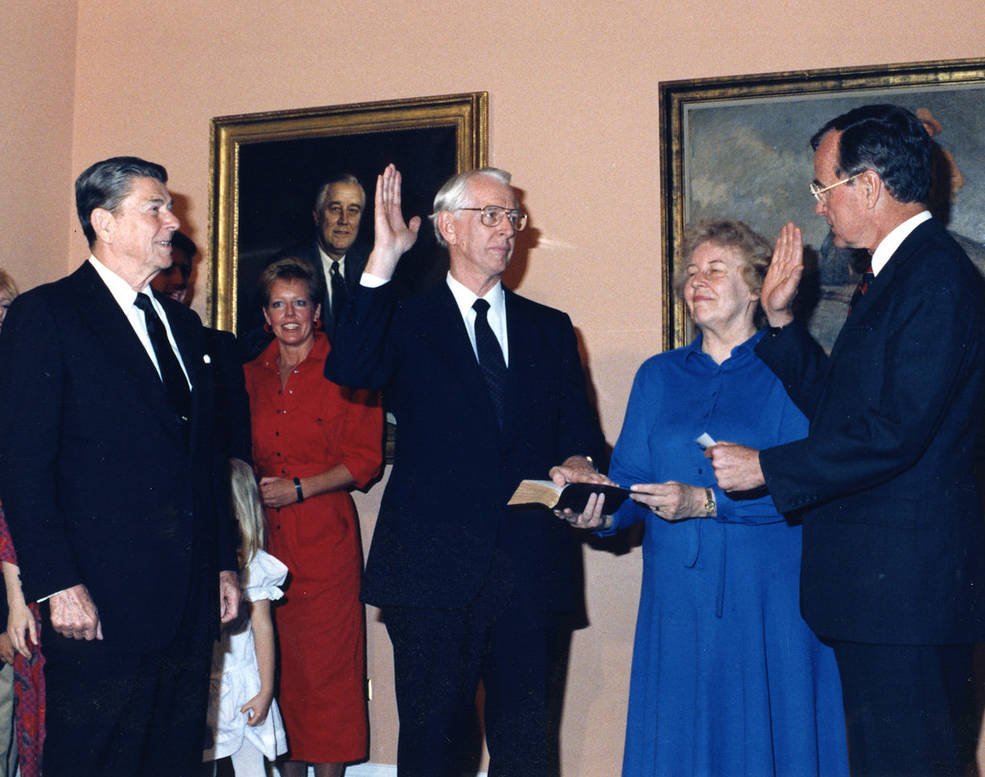
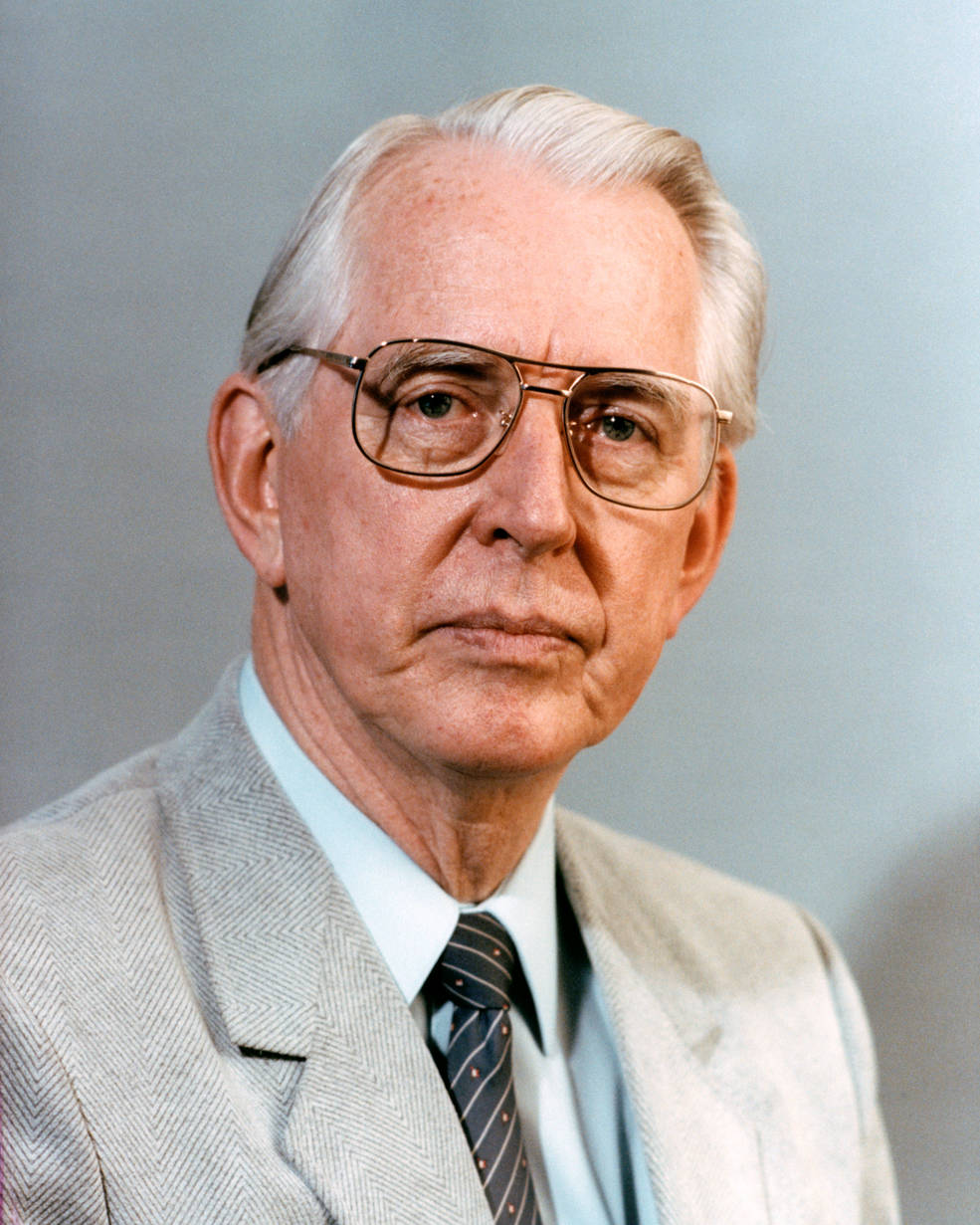
Left: James C. Fletcher, center, sworn in as NASA Administrator at the Oval Office in the White House by Vice President George H.W. Bush, right, as President Ronald W. Reagan, left, and Fay Fletcher look on. Right: Official portrait of NASA Administrator Fletcher.
Following the Jan. 28, 1986 space shuttle Challenger accident, President Reagan established a commission to investigate the causes of the tragedy. The investigation known as the Rogers Commission – named after its chairman, former Secretary of State William P. Rogers – was ongoing when on March 6 President Reagan nominated Fletcher to be the next NASA administrator, succeeding James M. Beggs. The U.S. Senate confirmed him on May 6, and Vice President George H.W. Bush swore him in on May 12 during a White House ceremony. The next day, Fletcher testified before the House Subcommittee on Appropriations about his plans to reorganize the agency’s management structure in the wake of the Challenger accident.
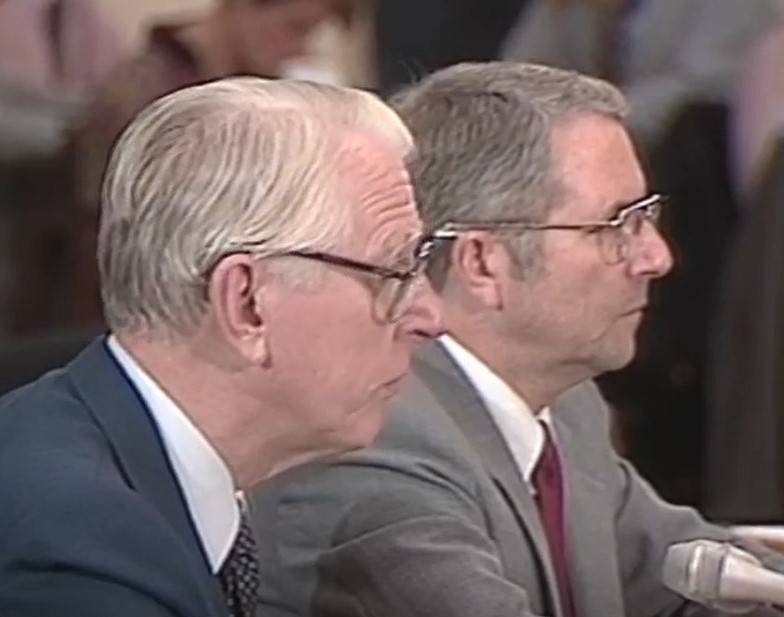
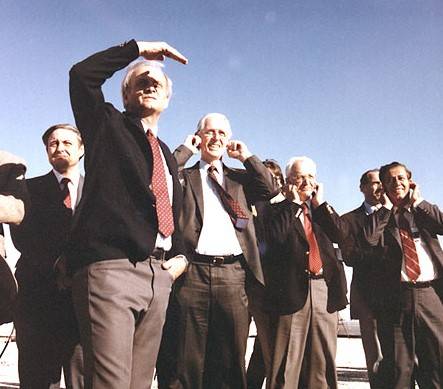
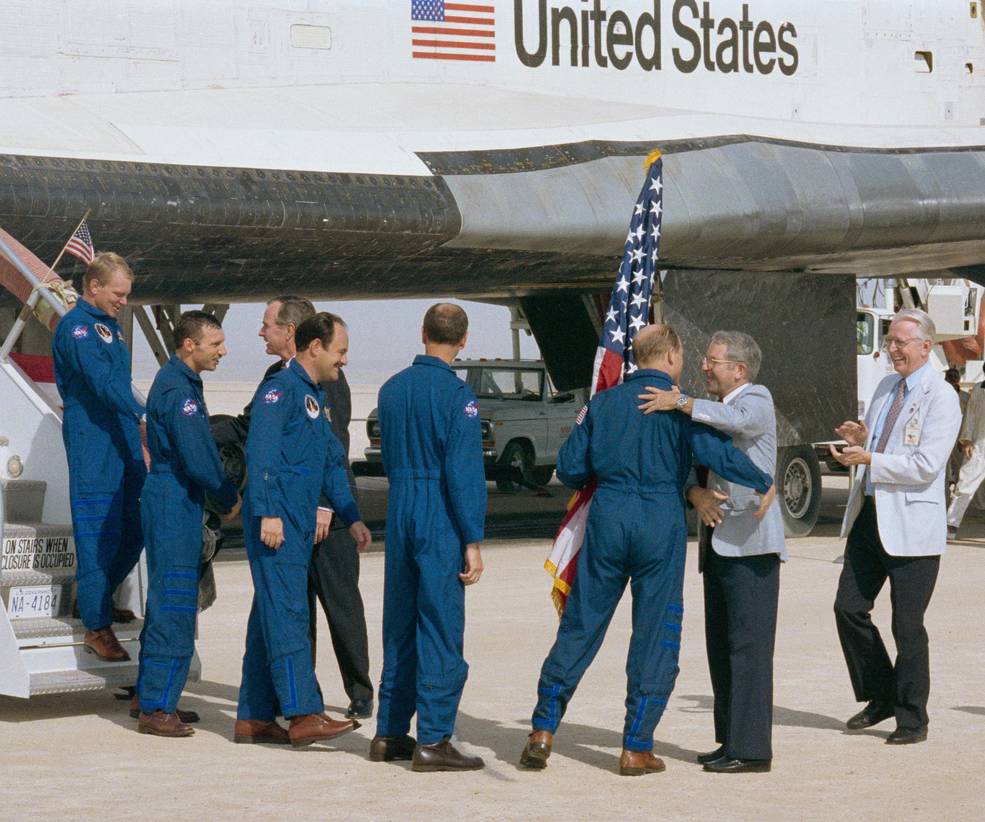
Left: NASA Administrator James C. Fletcher, left, and Richard H. Truly, associate administrator for space flight, testifying before the House Science and Technology committee on NASA’s response to the Rogers Commission report. Credit: Image courtesy of CSPAN. Middle: Administrator Fletcher, center, plugging his ears, observes a test of the space shuttle main engines at the National Space Transportation Laboratory, now NASA’s Stennis Space Center, as part of the recovery effort following the Challenger accident. Right: Administrator Fletcher, right, Associate Administrator Truly, and Vice President George H.W. Bush greet the returning STS-26 crew members at NASA’s Dryden Flight Research Center, now NASA’s Armstrong Flight Research Center, following the successful return to flight mission.
The Rogers Commission released its report on the Challenger accident on June 9, and Fletcher and other senior managers testified before the House Science and Technology Committee on June 11 about NASA’s response to the report’s recommendations. On July 14, Fletcher sent a formal report to President Reagan on the agency’s response to the Rogers Commission’s recommendations. To ensure the problem with the Solid Rocket Booster (SRB) that doomed Challenger, NASA implemented a redesign of the field joint between booster segments. As part of the management reorganization, Fletcher established the Safety, Reliability and Quality Assurance Office at NASA Headquarters in Washington, D.C., with direct safety oversight authority across the agency. As part of the effort to return the shuttle to flight, engineers at Morton Thiokol’s facility in Utah certified the redesigned SRB while engineers at the National Space Transportation Laboratory, now NASA’s Stennis Space Center in Bay St. Louis, Mississippi, completed acceptance testing of the three space shuttle main engines. While Challenger’s replacement Endeavour was being constructed on the ground, space shuttle Discovery launched on Sept. 29, 1988, retuning the Shuttle Program to flight. Four days later, Fletcher welcomed the crew back to Earth at NASA’s Dryden Flight Research Center, now NASA’s Armstrong Flight Research Center in California.
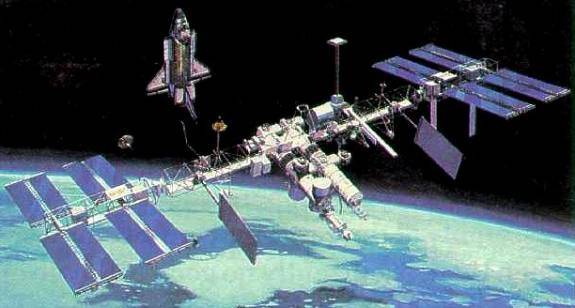
Illustration of the space station as it was envisioned in 1987.
During his Jan. 25, 1984, State of the Union message, President Reagan directed NASA to build a permanently occupied Earth-orbiting space station. In January 1987, Fletcher established the Office of Space Station at NASA Headquarters as the project moved from the design to the development phase. In April, President Reagan approved a new configuration for the space station, at the time expected to enable a permanent human occupation by 1996. Based on that configuration, NASA issued Requests for Proposals on April 24, 1987, for the design and construction of the space station and announced selection of the winners on Dec. 1. President Reagan announced Freedom as the name of the space station on July 18, 1988. On Sept. 29, 1988, on the very same day the space shuttle returned to flight, the United States signed an Intergovernmental Agreement (IGA) with the European Space Agency and the governments of Canada and Japan to establish formal cooperation on space station Freedom. The agreement established the basis for the subsequent International Space Station IGA signed in January 1998 by the partners including newly added Russia. Fletcher submitted his resignation to President Bush on March 21, 1989, effective April 8. The President nominated Truly to succeed him. Among his major accomplishments in his two terms as administrator, Fletcher made significant contributions to two of NASA’s major programs, the space shuttle and the space station.


























